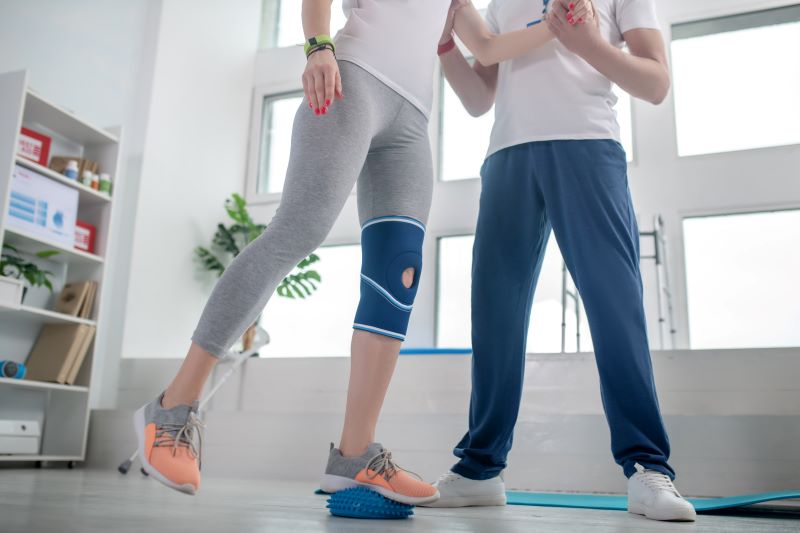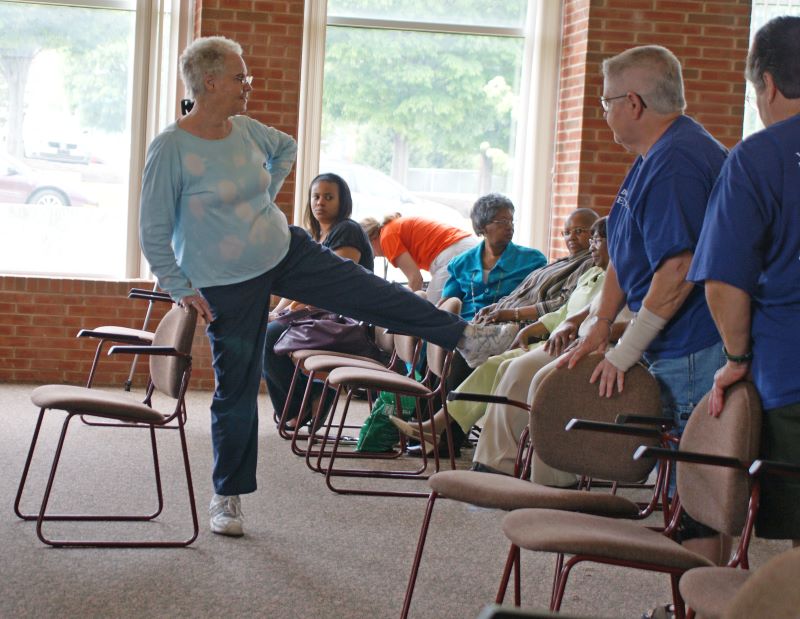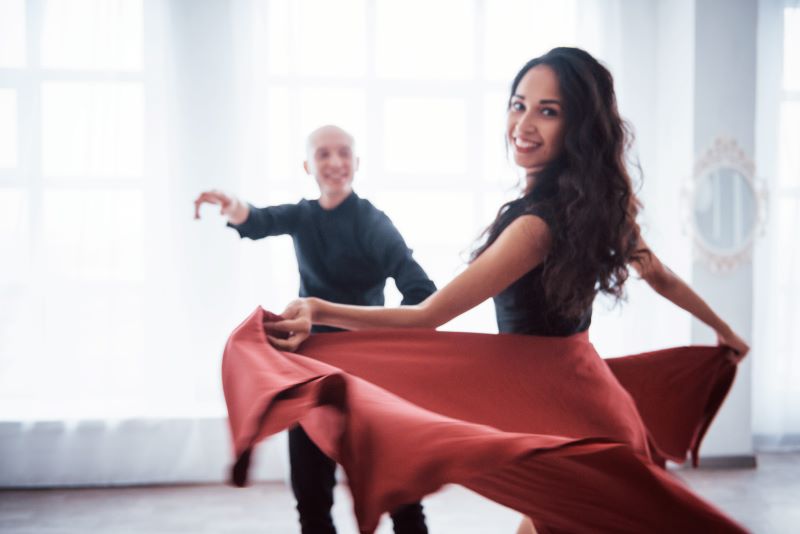Best Cardiovascular Exercises for Heart Patients

A condition of the heart or blood arteries is called cardiovascular disease (CVD). Two conditions can cause decreased blood flow to the heart, brain, or body: blood clots (thrombosis) and the accumulation of fatty deposits inside arteries, which cause the arteries to harden and narrow (atherosclerosis).
Behavioral risk factors may cause individuals to experience elevated blood pressure, glucose, lipids, overweight, and obesity. Incorporating different types of cardiovascular exercises can improve heart health.

Table of Contents

What is Cardiovascular Exercise?
Any exercise that uses aerobic metabolism is known as cardiovascular exercise. These exercises are also known as endurance or aerobic exercise. Cell reactions require much oxygen to produce energy and carry out the activity. The heart and breathing rates increase, which helps the body use oxygen efficiently. This is why one feels more energised and works out without getting tired quickly.
Apart from increasing the heart rate and breathing rate, cardiovascular exercise also raises blood flow throughout the body. This occurs due to the repetitive and rhythmic use of large muscles. Cardio improves heart health, sleep, mental health, weight regulation, mood and metabolism.
Causes of Cardiovascular Diseases
There are many causes of cardiovascular disease, depending on the particular kind. For instance, atherosclerosis or plaque accumulation in the arteries causes peripheral and coronary artery disease.
Drug side effects, hereditary disorders, coronary artery disease, or cardiac muscle scarring can cause Arrhythmias. Besides rheumatoid arthritis, infections and ageing can cause valve disorders.
Here are some common causes of Cardiovascular Diseases:
High blood pressure
Smoking
High cholesterol
Diabetes
Inactivity and sedentary lifestyle
Being overweight or obese
20 Best Exercises for Heart Patients
There are three categories of cardiovascular endurance exercises: high-impact, low-impact and no-impact.
High-impact cardio refers to exercises in which both feet are off the ground at some point. Conversely, low-impact cardio refers to exercises in which one foot always remains on the floor. No-impact cardio is any activity performed in water.
High-Impact Cardiovascular Exercises
High-impact exercise is typically prescribed for heart patients. These exercises can increase blood flow, lowering heart and blood pressure.
1. Cycling

Whether stationary or outdoors, cycling is a low-impact exercise that boosts cardiovascular fitness and can be tailored to individual fitness levels. Regular cycling improves heart muscles, lowers resting pulse, and reduces blood fat.
2. Elliptical Training

Ellipticals provide a perfect platform for interval training, alternating between high-intensity bursts and recovery periods. This low-impact exercise mimics the motion of running without stressing joints, providing a good cardiovascular workout for heart patients.
3. Balance Exercises

Practising balance techniques such as standing on one leg or using a balance board can enhance stability and coordination, reducing the risk of falls. Balance training can improve balance ability in different age and patient groups.
4. High-Intensity Interval Training (HIIT)

Short bursts of intense exercise and brief rest periods can improve cardiovascular fitness, metabolism, and overall heart health. High-intensity interval training is an excellent approach to avoiding heart disease.
5. Circuit Training

It's a form of full-body training involving rotating through different exercises with limited to no rest. Alternating between strength and cardiovascular exercises in quick succession provides a comprehensive workout that boosts heart health and builds endurance.
6. Chair Exercises

Seated exercises using resistance bands or light weights can help heart patients improve strength, flexibility, and circulation. Performing chair exercises can help exercise the joints and burn calories.
Low-Impact Cardiovascular Exercises
Low-impact cardio exercises are gentle on your joints while keeping your heart rate up and improving your cardiovascular health. Here are a few effective low-impact cardiovascular exercises:
7. Walking

Walking is a simple yet effective exercise that improves cardiovascular health and is gentle on the joints, making it ideal for heart patients. You don't need any special skills or equipment for this, and it is fairly simple to do.
8. Aerobic Dancing

Dancing to music at a moderate intensity can elevate heart rate, improve circulation, and boost mood, benefiting heart health. Regular aerobic activities help the heart work better and reduce the risk of heart attack.
9. Ballroom Dancing

Partner dancing, like salsa or ballroom dancing, provides cardiovascular benefits and enhances social interaction and mental well-being. By engaging in this form of dance, you can elevate your heart rate and increase blood flow throughout your body.
10. Nordic Walking

Walking with poles engages the upper body muscles while providing cardiovascular benefits similar to regular walking, making it an excellent choice for heart patients. Patients should gradually raise their walking levels, with the public health recommendation of 150 minutes per week as a minimum goal.
11. Resistance Training

When done with proper supervision, resistance bands or weights can help build muscle mass, increase metabolism, and improve heart health. A good rule of thumb is to do resistance training at least two nonconsecutive days per week.
12. Tai Chi

This gentle form of martial arts combines slow, flowing movements with deep breathing, promoting relaxation and enhancing heart health. Tai Chi's main benefit may be encouraging people reluctant to exercise to move more. The practice also emphasises breathing, focused attention, and visualisation.
13. Yoga

Yoga focuses on breathing, flexibility, and strength, contributing to better heart function and overall well-being. Beyond off-loading stress, practising yoga may help lower blood pressure, blood cholesterol and blood glucose levels, and heart rate, making it a useful lifestyle intervention.
14. Pilates

Pilates exercises strengthen core muscles, improve posture, and enhance cardiovascular fitness, benefiting heart patients. Pilates does not differ from other forms of physical exercise for improving cardiorespiratory fitness.
15. Stretching

Incorporating stretching exercises into a routine helps improve flexibility, alleviate muscle tension, and promote relaxation, all of which benefit heart health. Passive stretching before a workout can make your blood vessels more resilient to exercise stress.
16. Meditation

While not a traditional exercise, meditation reduces stress, lowers blood pressure, and promotes relaxation, all supporting heart health and overall wellness. Integrating the practice into a daily routine has been linked to lower heart rate and blood pressure, which may lower your risk of heart disease.
17. Stair Climbing

Climbing stairs is a convenient way to incorporate cardiovascular exercise into daily life, improving heart health and lower body strength. Climbing stairs likely benefits the heart because it combines cardiovascular and resistance exercises.
No-Impact Cardiovascular Exercises
No-impact cardio exercises are beneficial because they improve your heart health without stressing your joints, making them perfect for beginners or those with joint issues.
18. Swimming

Water provides resistance without impact, making swimming a great full-body workout that strengthens the heart and improves circulation. Swimming helps improve circulation and cardiac efficiency, reducing the risk of heart disease and stroke.
19. Water Aerobics

Exercising in water reduces the impact on joints while providing resistance, making water aerobics an effective and enjoyable way to improve heart health. It gives you a cardiovascular workout, gently increasing your pulse rate.
20. Rowing

Rowing machines offer a full-body workout that strengthens the heart and improves endurance while minimising impact on joints. It is a low-impact, high-intensity cardio workout that works the entire body and increases strength, power, and endurance.
Types of Equipment Required for Cardiovascular Exercises
Specific equipment is needed for some heart patient workouts to improve their safety and effectiveness. Such activities are included in this table to make sure cardiac patients are ready for a thorough fitness regimen.
Here's a list of equipment commonly used for Cardiovascular Exercises:
Exercise |
Required Equipment |
| Walking or running indoors | Treadmill |
| Improve balance and core strength | Stability Discs |
| Swimming workouts | Swim Gear |
| Running | Heart Rate Monitor |
| Balancing exercises | Balance Board |
| Jumping Rope | Jump Rope |
| Strengthening exercises | Exercise Ball |
| Pilates | Yoga Mat |
| Resistance Exercises | Resistance Bands |
| Rowing | Rowing Machine |
| Elliptical Training | Elliptical Trainer |
| Cycling | Stationary Bike |
Benefits of Exercise for Cardiovascular Disease Patients
Daily exercises bring various benefits to heart patients. To improve cardiovascular health, physical activity is imperative. Here are six benefits of exercise for heart patients:
1. Improved Cardiovascular Health
Regular exercise strengthens the heart muscle, lowers blood pressure, and improves circulation, reducing the risk of heart disease and related complications.
2. Enhanced Fitness and Endurance
Exercise helps increase aerobic capacity and endurance, allowing heart patients to perform daily activities with less fatigue and greater ease.
3. Weight Management
Physical activity aids in weight loss or weight maintenance, which is crucial for heart health as it helps reduce strain on the heart and lowers the risk of obesity-related conditions like diabetes and high cholesterol.
4. Lowered Risk of Secondary Events
Engaging in regular exercise after a heart event such as a heart attack or stroke can significantly reduce the risk of future cardiovascular events by improving overall heart function and reducing inflammation.
5. Improved Mood and Mental Health
Exercise stimulates the release of endorphins, neurotransmitters that promote feelings of well-being and reduce stress and anxiety. This leads to improved mental health and quality of life for heart patients.
6. Better Management of Chronic Conditions
Exercise can help manage conditions often associated with heart disease, such as diabetes and high cholesterol, by improving insulin sensitivity and lipid profiles, thus reducing the overall risk of complications.
How Effective are these Exercises for Cardiovascular Patients?
Most medical professionals think heart patients must exercise to prevent further health issues. In addition to drugs, exercise helps heart patients control their blood pressure and sugar levels, strengthen their heart muscles, and strengthen their heart.
Exercise also improves blood sugar regulation, bone strength, and weight loss. Many heart disease patient activities are best for you if you have had a heart attack recently and are experiencing persistent chest pain and dyspnea.
Exercise decreases body fat and boosts health. It strengthens your body, increases your stamina, and improves your mental well-being. When you exercise regularly, your heart pumps more blood without any restriction.
Who Should Avoid These Exercises?
While cardiovascular exercise is generally beneficial for most people, certain individuals should avoid or limit these activities, including:
- Those with Uncontrolled High Blood Pressure: Individuals with severely uncontrolled hypertension may need to avoid various cardiovascular exercises, as they can further elevate blood pressure and increase the risk of complications such as stroke or heart attack.
- People with Acute Illness or Injury: Those currently experiencing an acute illness, injury, or infection may need to refrain from strenuous exercise until they fully recover to prevent exacerbating their condition.
- Individuals with Certain Heart Conditions: People with certain heart conditions, such as severe heart failure, unstable angina, or recent heart attack, should consult with their healthcare provider before starting or intensifying a cardiovascular exercise program.
- Those with Joint or Musculoskeletal Problems: Individuals with severe joint pain, arthritis, or musculoskeletal injuries may need to avoid high-impact cardiovascular activities that place excessive stress on the joints, such as running or jumping.
- Pregnant Women with Complications: Pregnant women with certain complications, such as preterm labour, preeclampsia, or placental disorders, should avoid strenuous cardiovascular exercise and consult with their healthcare provider for appropriate guidance.
- People with Severe Respiratory Conditions: Individuals with severe respiratory conditions such as severe asthma, chronic obstructive pulmonary disease (COPD), or pulmonary hypertension should avoid activities that cause excessive shortness of breath or respiratory distress.
Disclaimer: Practice the above-mentioned exercises under the supervision of a trained practitioner and consult a doctor beforehand to ensure your body is fit enough to perform the required moves/postures.
As a result, those recuperating from heart sickness ought to consider engaging in cardiac patient exercises. These aid in their speedy recovery without the need for prescription drugs. They also help improve emotional and physical well-being and reduce the risk of heart disease in the future.













